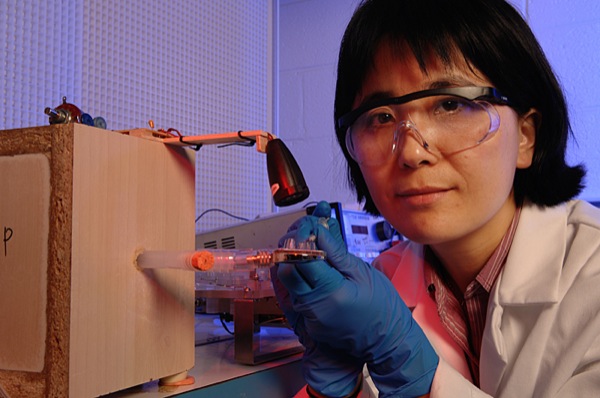 |
| The University of Delaware's Xinqiao Jia and her research team are working with Nemours to develop the nanotechnology.--Courtesy of University of Delaware |
Getting toxic drugs to cancer cells without harming healthy cells is one of the holy grails of drug delivery, and U.S. researchers have found a possible route to success in leukemia with fewer side effects, though the research is still at a very early stage.
In research published in Molecular Pharmaceutics, researchers from the University of Delaware and Nemours Center for Childhood Cancer Research dosed mice with leukemia with tiny nanoparticles of the anti-cancer drug dexamethasone, wrapped up in polymers. The mice getting the nanoparticle drug had only about a third of the standard dose but had a better quality of life and lived longer than the mice that got the drug alone. There were no discernible side effects.
Childhood leukemia makes up around 30% of cancers in children, and the most common from is acute lymphoblastic leukemia (ALL). Treatment success rates have improved to the point that the 5-year survival rate is almost 90%, but as survivors live longer, the long-term effects of treatment with commonly used drugs are becoming more apparent, including secondary cancers, infertility problems, hearing loss, and problems with cognition and development.
"There are currently 7 or 8 drugs that are used for chemotherapy to treat leukemia in children," said A. K. Rajasekaran of the Nemours Center for Childhood Cancer Research. "They are all toxic and do their job by killing rapidly dividing cells. The good news is that these drugs are 80 to 90 percent effective in curing leukemia. The bad news is that many chemotherapeutic treatments cause severe side effects, especially in children."
- read the press release
- see the abstract